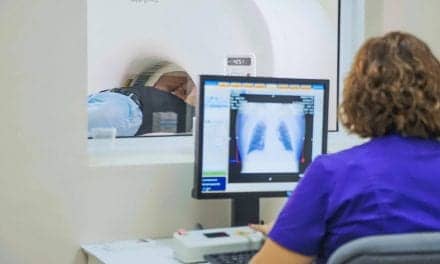By Aine Cryts
Lili He, PhD, professor of neonatology at Cincinnati Children’s Hospital Medical Center and senior author of a study about this work, tells AXIS Imaging News that it’s increasingly accepted that ADHD has a strong genetic component. Thus, the earlier a child is diagnosed with the condition, the earlier aggressive and effective interventions can begin. Unfortunately, she says, the current diagnostic criteria based on neurobehavioral testing doesn’t adequately support early diagnosis.
To address this issue, Le co-authored a study published in Radiology: Artificial Intelligence, where deep learning was used to enhance existing MRI-based detection techniques in 973 ADHD and control subjects. Her team isn’t trying to increase the number of ADHD diagnoses, she tells AXIS. Rather, He wants to improve the ability to reliably diagnose as early as possible children at risk of ADHD, based on genetics or other known risk factors.
AXIS Imaging News recently discussed this research with He. A slightly edited version of that conversation follows.
AXIS Imaging News: What do radiologists need to know about your research? How can it help them in their daily work?
Lili He: This emerging technology may be used in the future to enable at-risk children to be diagnosed as early as possible. When this application makes it through to the primary-care community, we imagine physicians could identify a child with high risk of ADHD—for instance, a sibling or child of a diagnosed ADHD sufferer—and have their MRI data fed into the deep learning algorithm for ultra-early diagnosis. These children would then benefit from early, focused intervention to mitigate the neurodevelopmental and behavioral impact of the disease.
AXIS: How does this actually work? How does AI help boost MRI detection?
He: Using AI, an algorithm designed to detect structural changes associated with ADHD using MR imaging of pediatric brains is trained with real-world, archived datasets. We took this method a step further by using a brain connectome-based learning algorithm that was trained with very large datasets.
(In an announcement about the story, the Radiological Society of North America, which publishes Radiology: Artificial Intelligence, described the connectome as a comprehensive brain map. “Advances in functional MRI, a type of imaging that measures brain activity by detecting changes in blood flow, have helped with the mapping of connections within and between brain networks,” continued the announcement.
AXIS: What image datasets did you use when building this AI tool?
He: The images used to train the algorithm were drawn from the Neuro Bureau ADHD-200 dataset, a national database, in addition to local image databanks. Thus, the patients whose images were used represent the larger population of the United States, rather than just the Cincinnati area.
AXIS: What are some of the other neurological conditions that could be treated with this application? What’s the impact of that work?
He: We chose ADHD as a disease state for several reasons, including the existence of an imaging databank with matching personal characteristic data, the known imaging markers of the disease, and the need for an improved, early detection method in this patient population.
The algorithm can be trained using existing–or prospectively collected–datasets from any patient population with known imaging markers with clinical correlates. Diseases where earlier diagnosis would be beneficial to the patient in terms of early interventions are likely to be of the most interest, such as neurological deficiency caused by very premature birth. In addition, diseases where patients are at risk (i.e., a family history) can be identified before clinical symptoms set in—[thus, such diseases] may benefit the most from this tool.
Still, it takes time and effort to train the algorithm, and then validate the deep learning outcomes in known diagnosed patient populations before it can be applied in clinical practice for a given disease.
Aine Cryts is a contributing writer for AXIS Imaging News.






